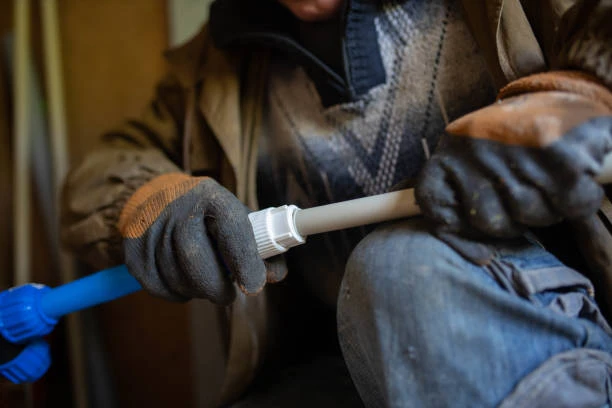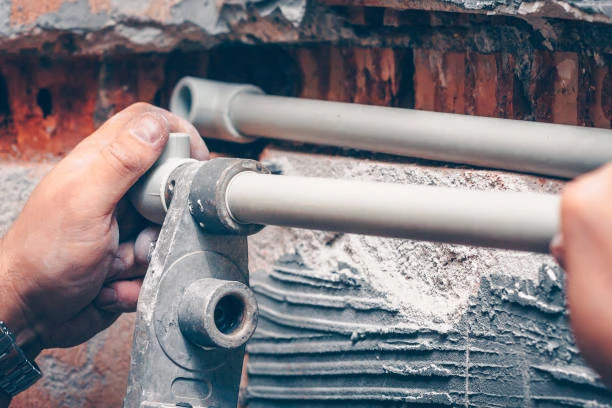When it comes to enhancing energy efficiency and improving home insulation, spray foam is a popular choice. One of its applications is in and around plastic pipes. Spray foam insulation helps reduce heat loss, minimize moisture buildup, and prevent condensation. This article explores how to properly apply spray foam insulation in and around plastic pipes, its benefits, and what to consider before proceeding.
Understanding Spray Foam Insulation and Its Benefits
Spray foam insulation is a versatile material that expands upon application, filling gaps, cracks, and spaces effectively. It provides a solid barrier against air, moisture, and temperature changes. Using spray foam in and around plastic pipes offers several benefits:
- Energy Efficiency: Spray foam insulation helps keep pipes insulated, reducing heat loss in hot water pipes and keeping cold water pipes from freezing in colder climates.
- Preventing Condensation: By creating an airtight seal around the pipes, spray foam reduces the likelihood of condensation, which can lead to mold or mildew growth.
- Noise Reduction: The foam’s dense structure can help absorb sounds, making plumbing systems quieter.
How to Apply Spray Foam Around Plastic Pipes
Applying spray foam insulation around plastic pipes requires careful attention to ensure the insulation does not cause damage to the pipes or interfere with their functionality. Here’s a step-by-step guide:
Step 1: Choose the Right Spray Foam
Select a high-quality spray foam specifically designed for plumbing applications. The foam should be both water-resistant and non-corrosive to avoid damaging the pipes. Open-cell spray foam works well for areas where air circulation is needed, while closed-cell foam is ideal for moisture resistance.
Step 2: Prepare the Area
Before applying the foam, ensure the area around the pipes is clean and dry. Remove any dust, dirt, or debris, as these can prevent the foam from adhering properly. Ensure the pipes are not leaking, as spray foam won’t seal leaks effectively.
Step 3: Apply the Foam
Using a spray foam canister, apply the foam evenly around the plastic pipes, ensuring it covers gaps and joints. Avoid overapplying, as the foam expands as it dries. Make sure to leave some space for the foam to expand freely. If you’re insulating pipes in confined spaces, use a long nozzle for better control.
Step 4: Allow the Foam to Set
Let the foam cure according to the manufacturer’s instructions. Most spray foams need at least 24 hours to fully expand and set. Once the foam has dried, it will harden into a solid layer that provides insulation around the pipes.
Step 5: Trim Excess Foam
Once the foam has fully cured, trim any excess foam using a utility knife. Ensure the foam does not obstruct the flow of water in the pipes, especially around valves or joints.
Important Considerations When Insulating Around Plastic Pipes
While spray foam insulation offers many benefits, it’s important to consider a few key factors before applying it around plastic pipes.
Thermal Expansion and Contraction
Plastic pipes expand and contract with temperature changes. When applying foam, make sure there is enough space around the pipes for this movement. If the foam is applied too tightly, it can cause the pipes to crack or break under stress. Using a foam that allows slight flexibility can help accommodate this.
Moisture and Water Resistance
Ensure the foam insulation used is water-resistant, especially when insulating pipes in areas like basements or crawl spaces. If moisture is allowed to accumulate, it can lead to mold or mildew growth, which could damage both the pipes and the surrounding materials.
Avoiding Direct Contact with Pipes
Although spray foam is an excellent insulator, it should not make direct contact with pipes unless it is rated for plumbing use. In some cases, excessive insulation or improper application may cause the pipes to become too hot or cold, affecting their performance. Using a barrier between the pipe and foam may be necessary for certain applications.

Benefits of Spray Foam Insulation Around Plastic Pipes
Using spray foam insulation around plastic pipes provides significant benefits, particularly when it comes to energy efficiency and durability.
Improved Energy Efficiency
By insulating pipes, spray foam helps maintain the temperature of the water within the pipes. This reduces the need for additional energy to heat or cool the water, ultimately lowering your utility bills.
Longer Pipe Lifespan
Spray foam insulation protects pipes from extreme temperature fluctuations. This helps prevent damage such as cracking or warping, especially in areas where temperatures fluctuate dramatically. Over time, this can prolong the lifespan of plastic pipes, saving on expensive repairs or replacements.
Enhanced Comfort
In homes where hot or cold water pipes are exposed, spray foam insulation helps maintain consistent water temperatures. This leads to greater comfort, as water temperatures remain stable regardless of the outside weather conditions.
Comparing Spray Foam Insulation to Other Insulation Methods
Spray foam insulation is not the only way to insulate around plastic pipes. Other methods, such as fiberglass or foam pipe insulation sleeves, can also be used. However, spray foam offers several advantages:
- Complete Coverage: Unlike foam sleeves or fiberglass, spray foam expands to fill every gap and crevice around pipes, providing more thorough coverage.
- Better Seal: Spray foam creates an airtight seal, which reduces the chances of leaks or drafts.
- Customization: Spray foam can be applied in hard-to-reach areas, where traditional pipe insulation may be difficult to install.
When Not to Use Spray Foam Around Plastic Pipes
While spray foam insulation is effective for many plumbing applications, there are a few scenarios where it might not be the best choice:
- Excessive Heat: If pipes carry hot water, spray foam may not be suitable unless specifically rated for high temperatures. Some plastics can soften or degrade with prolonged exposure to high heat.
- Restricted Space: In very tight spaces, applying spray foam around pipes can be difficult. In such cases, foam sleeves or other forms of insulation might be more practical.
Conclusion
Spray foam insulation is a highly effective way to improve the energy efficiency of your plumbing system, especially when applied around plastic pipes. It prevents heat loss, reduces the risk of condensation, and can extend the life of your pipes. However, it is important to apply it properly and consider potential risks, such as thermal expansion and contraction of plastic pipes. When used correctly, spray foam can be an excellent tool for reducing energy waste and maintaining a healthy, efficient plumbing system.
FAQs
1. Can I apply spray foam insulation to any type of plastic pipe?
Spray foam is suitable for most types of plastic pipes but ensure the foam is rated for use with plumbing materials.
2. Will spray foam damage plastic pipes over time?
If applied correctly and with the right foam, spray foam should not damage plastic pipes. Ensure there is enough space for expansion.
3. How does spray foam help with energy efficiency?
Spray foam reduces heat loss from hot water pipes and prevents cold water pipes from freezing, ultimately lowering energy costs.
4. Can I install spray foam insulation myself?
Yes, but ensure proper safety precautions and follow the manufacturer’s instructions for application.
5. Is spray foam insulation waterproof?
Yes, most spray foams used for plumbing are water-resistant, but always check the product specifications to ensure it meets your needs.


















